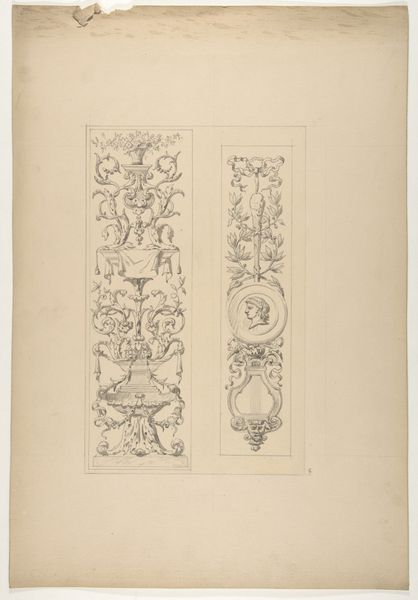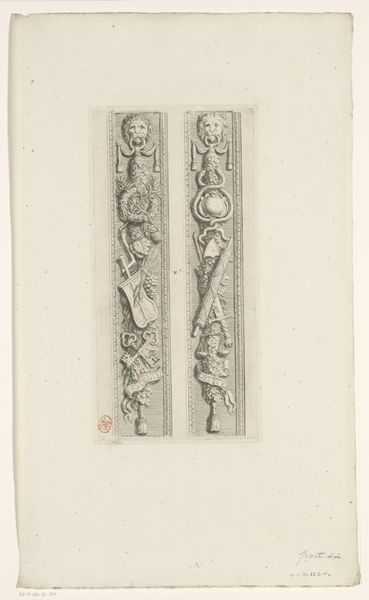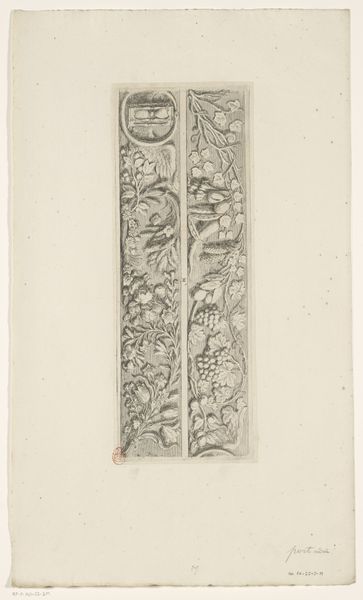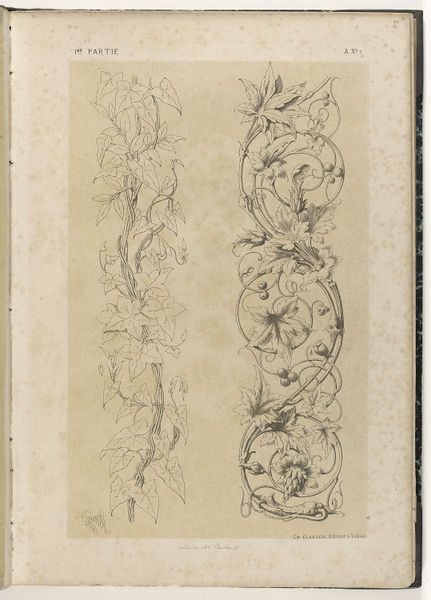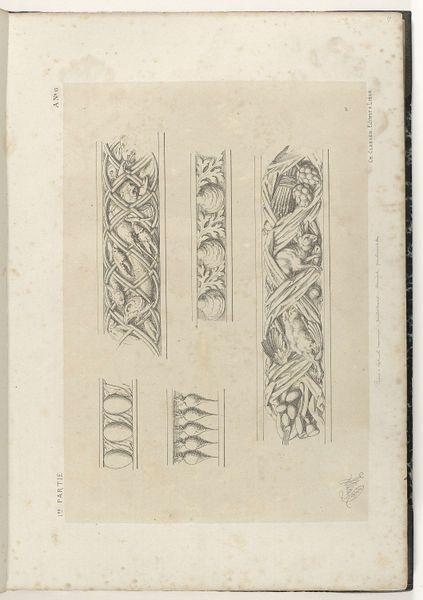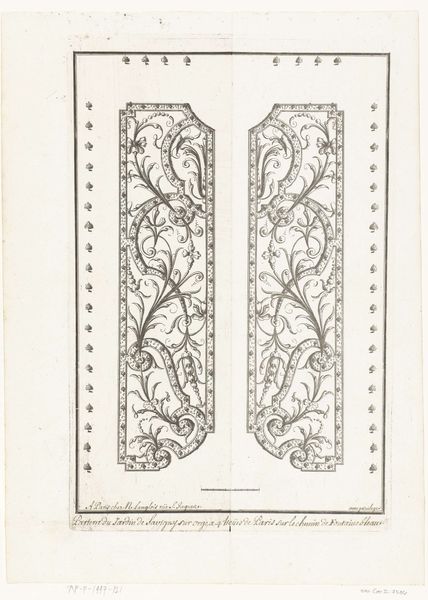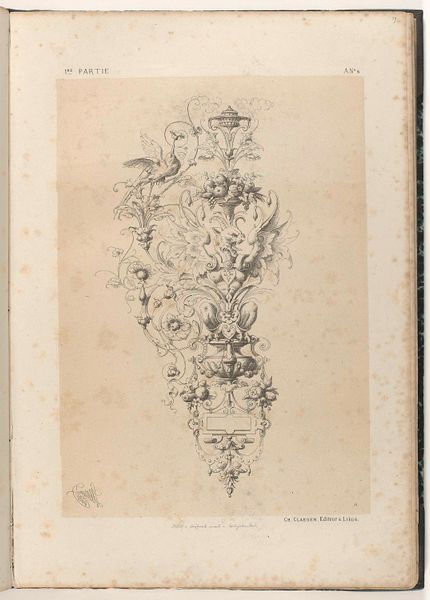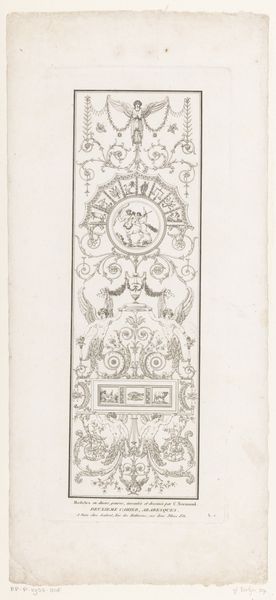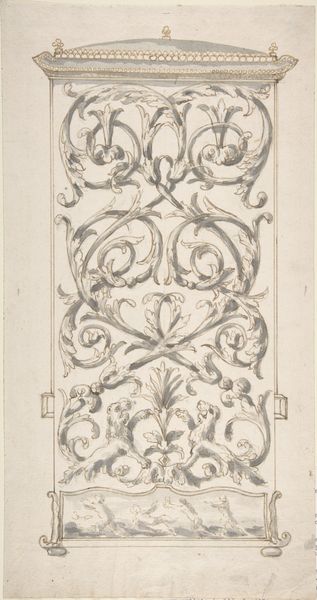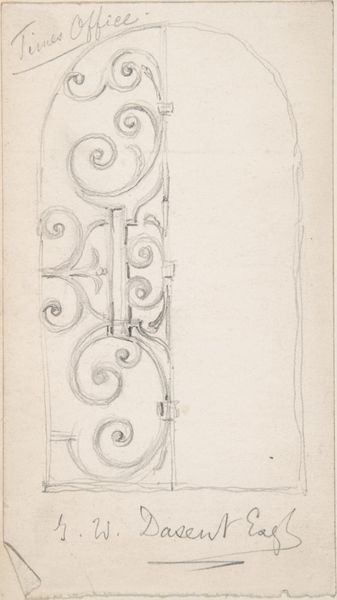
Fries met bladmotieven, griffioen en slang voor op schouw(en) in vertrek(ken) van het Stadhuis op de Dam 1663
0:00
0:00
hubertquellinus
Rijksmuseum
drawing, relief, paper, ink
#
drawing
#
baroque
#
relief
#
paper
#
form
#
ink
Dimensions: height 131 mm, width 298 mm
Copyright: Rijks Museum: Open Domain
Editor: Here we have a drawing titled "Fries met bladmotieven, griffioen en slang voor op schouw(en) in vertrek(ken) van het Stadhuis op de Dam," or "Frieze with leaf motifs, griffin and snake for mantels in rooms of the Town Hall on the Dam," created in 1663 by Hubert Quellinus. It seems to be made of ink on paper and it represents some relief forms. What particularly strikes me is the intention to materialize abstract virtues through ornament for public spaces. How would you interpret the artist's approach here? Curator: Looking at this piece from a materialist perspective, it's fascinating to consider the labor and socio-economic forces at play. This drawing is, in essence, a design blueprint. Consider the labour divisions needed to translate the concept into relief work on a grand public building such as the Amsterdam Town Hall; it speaks of a whole hierarchical network of production! Quellinus here isn't just creating art; he's contributing to the symbolic construction of civic power through meticulous designs made real with the labor of sculptors, stone masons, and transporters. Editor: That’s a good point. So, this isn’t just art for art's sake, but an integral part of a much larger, economically complex operation. It kind of blurs the line between artistic creation and skilled craftsmanship, right? Curator: Precisely. The artist conceived these symbolic programs for elite patrons of the time who likely saw manual labor as a distinct, almost base pursuit; but, by acknowledging the contributions from artisans and workshops this approach inherently questions our traditional notions about hierarchies between "high" art and the supposedly lesser arts and crafts, by showing them to be interwoven. This blurring challenges the art market’s rigid categories of "fine art" and mere commodity. Editor: I never thought about it in those terms before, seeing the actual labor involved behind such ornamental designs really opens up a new way of viewing Baroque art. Curator: Exactly. Recognizing this context can lead to some profound revelations when we're observing and interacting with art.
Comments
No comments
Be the first to comment and join the conversation on the ultimate creative platform.
